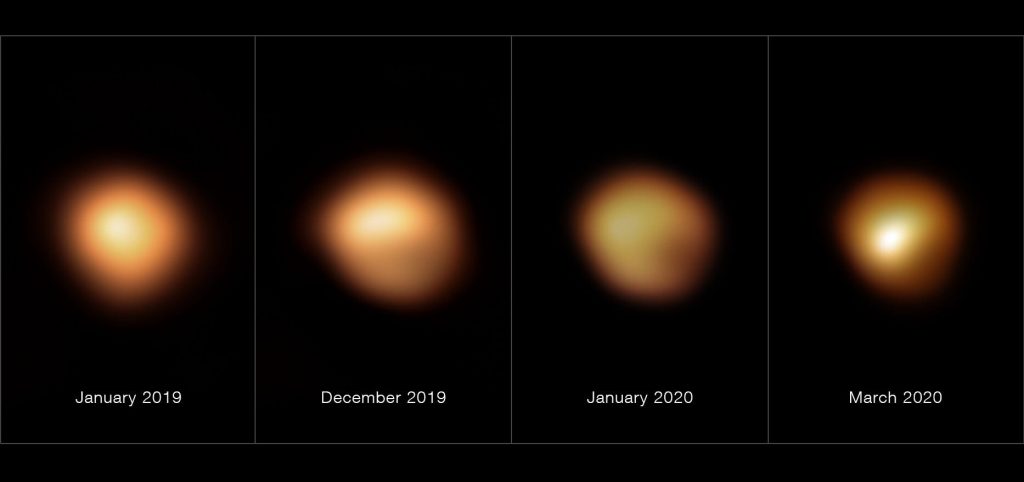
ESO/M. Montargès et al.
- Betelgeuse, a distant red giant star, captured the world's attention last year because it was dimming.
- The star's dying light indicated that it might soon explode in a supernova.
- But a new study reveals that's not the case – it was just veiled in a cloud of dust.
- See more stories on Insider's business page.
Scientists have solved one of the most sensational cosmic mysteries in recent memory – and they can chalk the whole thing up to dust.
The red super-giant star Betelgeuse enraptured the world early last year after scientists noticed that it was dimming. That was taken as a potential sign that the star was beginning to die, collapsing and losing energy – a process that would eventually end in a giant supernova explosion. Betelgeuse, then, could have been the first supernova observed in our galaxy since the 17th century. The effect likely would have been visible to the naked eye, shining bright in the sky for months.
But it turns out the star isn't blowing up after all. According to a study published in the journal Nature on Wednesday, it just appeared to be dimming because a veil of dust was shrouding the star.
"For once, we were seeing the appearance of a star changing in real time on a scale of weeks," astrophysicist Miguel Montargès, the lead author of the new study, said in a press release. "We have directly witnessed the formation of so-called stardust."

ESO/P. Kervella/M. Montargès et al., Acknowledgement: Eric Pantin
To figure out what was happening to Betelgeuse, Montargès and his team of researchers monitored the star's dimming with telescopes on Earth, which allowed them to see the details on its surface. They kept at it through April 2020, as the star returned to its original brightness.
In the end, they concluded that the star had simply belched out a large bubble of gas. Shortly afterwards, a patch of its surface cooled down enough to condense some of that gas into dust. The cloud of dust lingered for months, blocking Betelgeuse's light and making it look darker and darker from Earth's vantage point.
Even though Betelgeuse isn't going supernova, its dimming still offered an important display of a critical cosmic process.
"The dust expelled from cool evolved stars, such as the ejection we've just witnessed, could go on to become the building blocks of terrestrial planets and life," Emily Cannon, a co-author of the study, said in the release.











